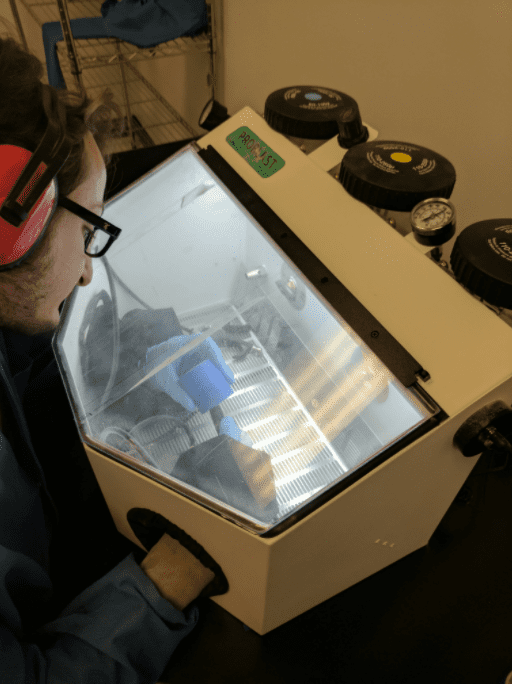How to Remove Conformal Coatings
Posted by Sean Horn
Friday, September 22, 2017 8:08
@ 8:08 AM
Appropriately selected and applied, conformal coatings provide essential working protection for printed circuit boards (PCBs). However, removal of conformal coatings is necessary if the wrong coating material is selected relative to the PCB’s functional requirements, inadequately supporting its operating environment. Poor coating application can trigger failure mechanisms within the assembly, also calling for its removal and re-application.
Effective Coating Removal Processes
The type of coating material used affects all removal issues, as well as those attached to rework and repair. Therefore, the possibility of film removal needs to be addressed up-front when deciding upon coating material and process. Several removal methods are prominent:
 Although chemical solvents are used for coating removal more often than any other process, no single solvent methodology exists. Implemented essentially for most liquid process films – acrylic, silicone, urethane — coating material is the prime determinant of solvent choice. Spot-basis coating removal by brushing or swabbing the local area with controlled solvent-application can be very successful. For faster results, immersion of assemblies in large solvent-quantities is suggested. The solvent butyrolactone is effective for chemical removal of most acrylic resin coatings. Chemical removal via methylene chloride or hydrocarbon-based solvents is recommended for silicone; they are far less likely to damage PCBs, components, metals and plastics than other solvents. For urethane, solvents composed of activators of ethylene glycol ether-base/alkaline or methanol-base/alkaline remove urethane conformal coatings efficiently. Chemical removal methods are generally ineffective for epoxy. Except in rare cases, solvent removal is futile for chemically-inert parylene. Tetrahydrofuran (THF) is the only chemical solvent that consistently removes parylene from assembly substrates; the limited chemical options remaining are highly specialized and seldom applied.
Although chemical solvents are used for coating removal more often than any other process, no single solvent methodology exists. Implemented essentially for most liquid process films – acrylic, silicone, urethane — coating material is the prime determinant of solvent choice. Spot-basis coating removal by brushing or swabbing the local area with controlled solvent-application can be very successful. For faster results, immersion of assemblies in large solvent-quantities is suggested. The solvent butyrolactone is effective for chemical removal of most acrylic resin coatings. Chemical removal via methylene chloride or hydrocarbon-based solvents is recommended for silicone; they are far less likely to damage PCBs, components, metals and plastics than other solvents. For urethane, solvents composed of activators of ethylene glycol ether-base/alkaline or methanol-base/alkaline remove urethane conformal coatings efficiently. Chemical removal methods are generally ineffective for epoxy. Except in rare cases, solvent removal is futile for chemically-inert parylene. Tetrahydrofuran (THF) is the only chemical solvent that consistently removes parylene from assembly substrates; the limited chemical options remaining are highly specialized and seldom applied.- Micro abrasive blasting (abrasion) is inexpensive AND environmentally friendly. Assignment-specific formulas of abrasive media and inert gas/dry air are projected at the coated surface by a tiny nozzle attached to a stylus. Grounding devices dispel electrostatic potential; coating debris are removed from the substrate by filtration. Project focus can be as minute as an individual test node or as large an entire PCB. Unique among removal methods, micro-abrasion is recommended for acrylic, epoxy, parylene, silicone and urethane conformal films.
- Often used to remove coating from specific components – connectors or similar highly-selective assembly mechanisms — oxygen-based plasma is versatile. Its fine-scaled procedures can be expanded, to strip conformal films from entire PCBs. This method is effective for parylene removal, and has been successful with wet coatings.
- Cost-effective laser ablation provides very precise results for challenging removal assignments in assembly regions of a single micron or smaller. Unfortunately, since each laser pulse separates only a minute segment of the existing film’s material thickness, processing is slow. Very effective for parylene, laser converts the solid coating to gas or plasma.
- Mechanical/peeling methods require time-consuming cut-, sand- or scrape-processes to remove films from substrates. Less reliable than other methods, thorough masking of non-removal surfaces is required in all cases. Without precision control, mechanical removal damages components. Used only under specific conditions (i.e. removing thickly-applied silicone coating), peeling applies a dull knife/blade to cut the film into sections that can be manually-peeled from the PCB. Acrylic, epoxy and silicone films respond to mechanical removal methods. Mechanical scraping is sometimes the only reliable method for difficult-to-remove parylene.
- Difficult to manage thermal methods rely on very high-temperatures generated by a soldering iron, which can delaminate/discolor/overheat components, weaken solder joints, and leave surface residue. Thermal methods should be limited to spot-removal; toxic fumes can result from careless thermal application. Thermal treatment has been successful for acrylic, epoxy and silicone coating removal. It also has some utility for spot-removal of parylene, but the process is difficult to control.
Summary
Removal strategies are an integral element of design, based largely on the assembly’s specific coating material requirements and operational function. Matching removal methodology with type of coating material used, its thickness after application, and the PCB’s project/purpose is mandatory. There is no one general rule or approach. For instance, solvent removal suitable for liquid coatings is generally useless for parylene. This kind of procedural inconsistency prevails according to film material and the assembly’s operational requirements; project-specific removal processes are always necessary. Determining the appropriate removal procedure assures optimal removal without interfering with PCB function after it has been recoated.
To learn more about conformal coating removal, download our whitepaper:
Conformal Coatings Rework Whitepaper
If you’re looking for conformal coating removal services, look no further than Diamond-MT. Our team of experts is committed to providing the high-quality service that your project needs. Contact us to day for more information about our services or to request a quote.
Comments
Homepage 4/17/2020. 10:17:10 AM
... [Trackback] [...] Informations on that Topic: blog.paryleneconformalcoating.com/whats-the-difference-between-potting-and-conformal-coating/ [...]

londondrugscanada.bigcartel.comlondon-drugs 4/17/2020. 10:17:10 AM
cialis uk https://londondrugscanada.bigcartel.com/london-drugs This is nicely expressed. !